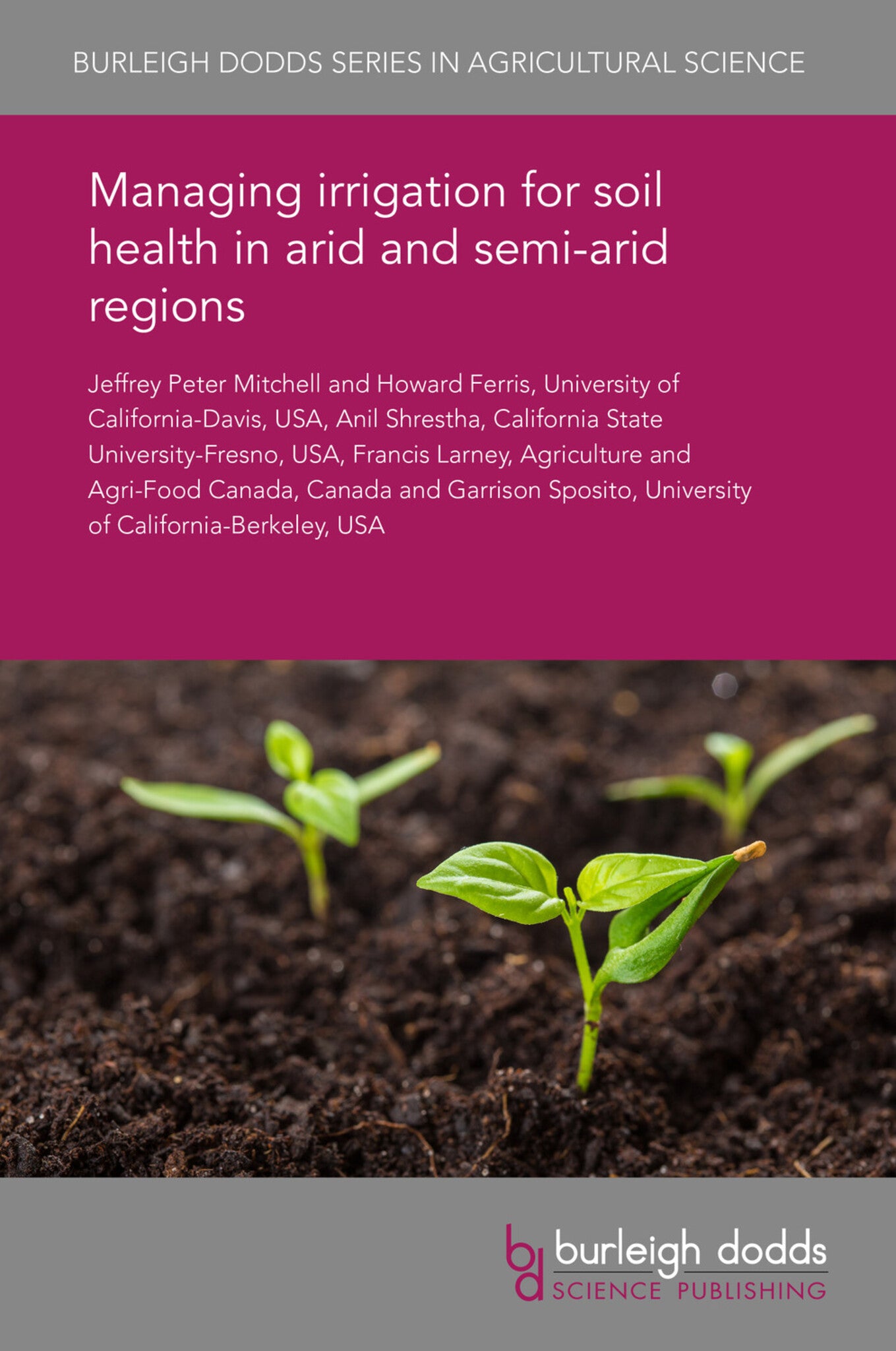We're sorry. An error has occurred
Please cancel or retry.
Managing irrigation for soil health in arid and semi-arid regions
Professor jeffrey mitchell,
Dr howard ferris,
Dr anil shrestha,
Francis j. larney,
Dr garrison sposito
Regular price
£25.00
Sale price
£25.00
Regular price
£0.00
Unit price
/
per
Sale
Sold out
Re-stocking soon
Irrigated arid and semi-arid regions of the world account for more than 40% of the global crop production. Managing soil health while simultaneously increasing water use efficiency in these areas i...
Read More

Some error occured while loading the Quick View. Please close the Quick View and try reloading the page.
Couldn't load pickup availability
- Format:
-
06 August 2018

Irrigated arid and semi-arid regions of the world account for more than 40% of the global crop production. Managing soil health while simultaneously increasing water use efficiency in these areas is challenging, but critical to future global food security. This chapter describes production practices such as no-tillage and surface residue preservation that maximize both water infiltration into soil and soil water retention, reduce runoff and evaporation and thereby increase the productive flow of water via transpiration. The chapter summarizes recent information on the application of soil health management principles in irrigated and dry land arid and semi-arid environments, including examples of cost–benefit trade-offs associated with reduced-disturbance no-tillage systems and the use of cover crops. The chapter looks ahead to future trends in this area and suggests further reading for those interested in researching further.

Price: £25.00
Publisher: Burleigh Dodds Science Publishing
Imprint: Burleigh Dodds Science Publishing
Series: Burleigh Dodds Series in Agricultural Science
Publication Date:
06 August 2018
ISBN: 9781786764096
Format: eBook
BISACs:
TECHNOLOGY & ENGINEERING / Agriculture / Agronomy / Soil Science, Irrigation and water management, TECHNOLOGY & ENGINEERING / Agriculture / Sustainable Agriculture, Soil science and management, Sustainable agriculture, Organic farming, Agronomy and crop production

1 Introduction 2 Arid and semi-arid regions 3 No-till cropping systems 4 Cover cropping systems 5 Soil food web management for nitrogen availability in arid and semi-arid areas 6 Conclusion 7 Future trends 8 Where to look for further information 9 References



